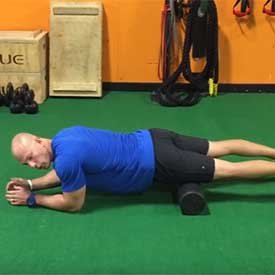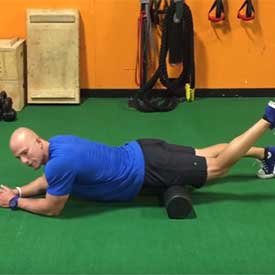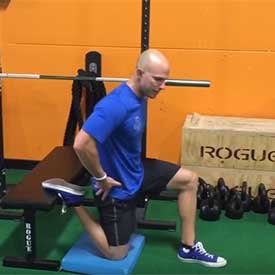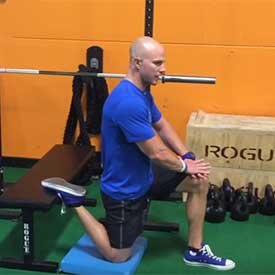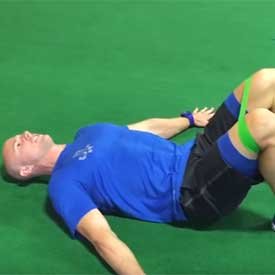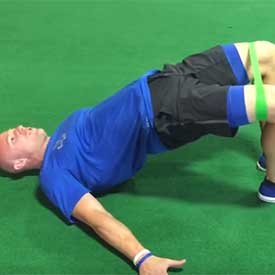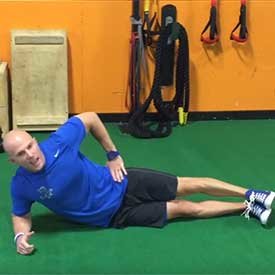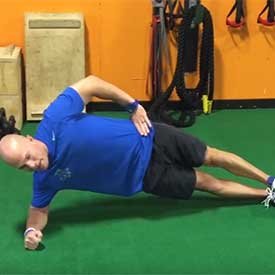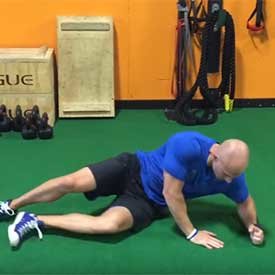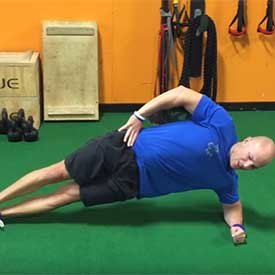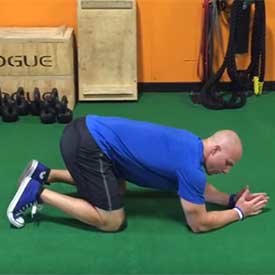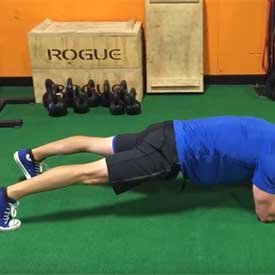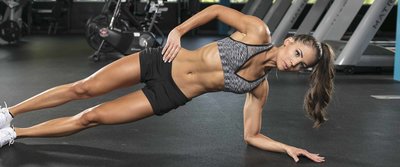
Protect Your Back With This Daily Routine
Your glutes, core, and lower back called. They're tired of getting the short end of the stick! Give them 5 minutes of love each day with this routine, and you'll never regret it.
As lifters, we'll do just about anything to keep getting stronger, packing on more muscle, and progressing toward our goals in and out of the gym. But let's be real: Most of us are dealing with the same chronic daily sedentary positions as the rest of the Western population, and as much as we might like it to, the gym doesn't "heal" the chair.
On the contrary, the time you're spending sitting throughout the day is most likely negatively impacting both the quality of your training and your orthopedic health. And every once in a while, those two come crashing together in the form of a painful "sproing" at the bottom of a squat, or just waking up after a deadlift session and knowing something ain't right.
If you're not about to quit that desk job that provides a roof over your head and supplements in your shaker bottle just to concentrate on your daily body positioning, I have the next best thing for you. This daily postural activation routine is quick, effective, and it will have you standing taller, feeling better, and avoiding common and chronic flare-ups at your hips and lower back in the process.
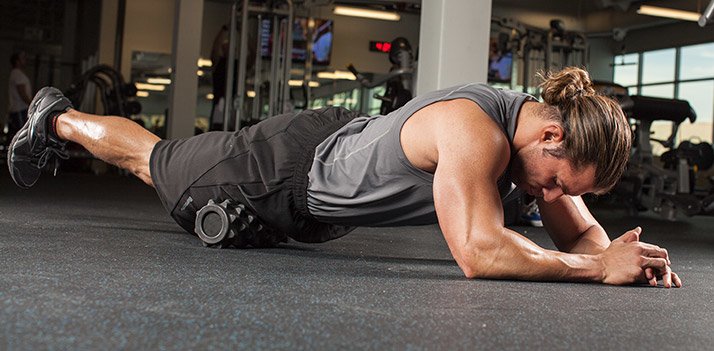
Give me 5 minutes a day for the next few weeks, and I can help you reset your posture, activate your key spinal stabilizers, and avoid melting into your chair at work.
The Movements
This postural activation program is predicated on pristine execution, so pay attention to the details. Below are video-based tutorials of each of the drills in the routine along with coaching notes to be sure you are taking into account ever major detail of importance.
Don't skimp on the execution here, or you'll be wasting your time and energy!
1. Foam Roll Quads
This isn't an excuse to flop around on the ground like a dead fish, but rather an opportunity to target some of the most functionally shortened tissues in the body with the foam roller.
Concentrate on one quad at a time in order to exert more bodyweight through the roller for a better soft-tissue stimulus. Once you position yourself on your stomach with the roller under the front of one of your thighs, it's time to go hunting. Your goal is to search for the most tender and palpable trigger point in this region and oscillate on and off of it, only moving the roller 1-2 inches at a time for 20-30 seconds. Find 2-3 such spots on each side to take the neural parking break off these tissues.
Don't go overboard on the rolling. It's very easy to waste away 30 minutes trying to roll the entire body. Remember, you're simply using this protocol for a precise tissue response to prime you for the next movement in this series.
Shop Foam Rollers In Our Store!
2. Dynamic Hip-Flexor Stretch
In my experience, this dynamic stretch is non-negotiable for anyone who spends time sitting—in other words, the vast majority of humans on earth. People get caught up in trying to "stretch" the hip flexors, but instead, the focus should be on allowing this group of muscles to functionally lengthen as they were anatomically and biomechanically designed to do against a strong and stable lumbo-pelvic complex.
Here's how to achieve it: From a half-kneeling position, practice and master three points of stability before even thinking about stretching. First, generate tension through the pecs and lats, which will centrate the shoulder joints and scapulae. Second, actively contract the glute on the kneeling leg to set the pelvis in a well-aligned position. Finally, turn on the core. If you've got the other positions right, 360 degrees of core tension should come naturally.
From this stable position, bring your hands slowly to the front knee and oscillate back and forth with 1-2 inches of relative knee movement for 45 seconds. Follow that with a 30-second static stretch at end range. Again, avoid lower-back compensation, and instead own some legit pelvic stability.
3. Banded Glute Bridge
Most everyone who sits on their ass during the day creates not only poor alignment at the pelvis and lumbar spine, but also an occlusion effect at the gluteal muscles themselves, reducing local blood supply to these tissues. So our focus after stretching the front of your lower body is to activate the posterior chain, particularly the marquee player in backside posture and stability, the gluteus maximus.
The glutes are a multifaceted set of muscles, responsible for many movements at the hips and pelvis. So, in order to get true activation and strong contractions from the thickest muscle in the human body, we need to target multiple actions of the glutes at once. All we need to do that is a mini-band and a bit of floor space.
While laying on your back, wrap the mini-band just above the knees, with your feet in a relatively narrow position. Drive your knees out actively first, and drive your hips up hard into extension. Hold that peak contraction for a second, and lower back down with control. The goal here is to squeeze the glutes and produce as much internal muscular force as possible to activate them.
If that sounds like a lot of energy, well, that's the reason we are doing several bouts of just 6 reps instead of stringing together a long set of 10-12. Between sets of this glute-activation drill, take a few seconds and concentrate on tapping into that mind-muscle connection—or more specifically here, the mind-glute connection—which is an undervalued tool in activation drills like this.
4. 3-Way Plank
The final movement of this postural activation routine will be what I call the 3-way plank, which is a side plank and front plank drill combined into one sequence.
Before you get ready to hang out in lazy plank mode for minutes on end, think again. We'll be using RKC-style planking, which requires maximum voluntary contractions for very short bursts of effort. These 15-second holds will recruit plenty of motor units from the force of contraction, while also sparking the irradiation effect throughout the lower body, pelvis, spine, and upper body.
Start with the side plank, completing 15 seconds on each side, and end with the front plank on elbows to finish off this sequence. Squeeze everything you can in all these positions. My favorite places to cue are centered on the ball and socket joints, the shoulders and hips. Squeeze the glutes, squeeze the shoulders, and maximize intra-abdominal pressure and tension.
After two rounds of this, you'll be ready to roll. Do this routine in the morning to start your day off right, or feel free to use this entire sequence to break up bouts of sitting during the day. If you do it regularly, you can't go wrong!

